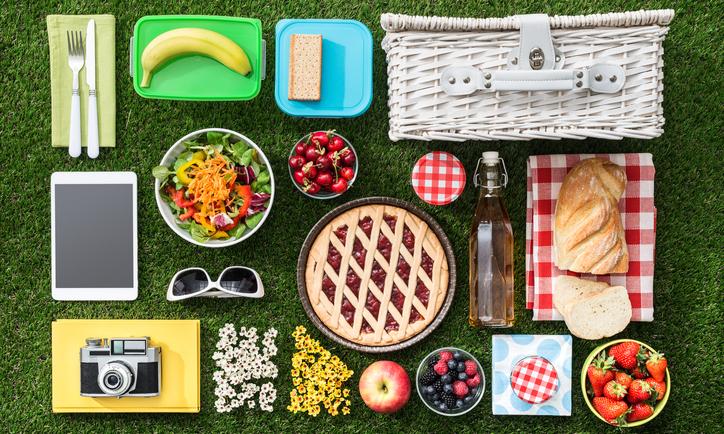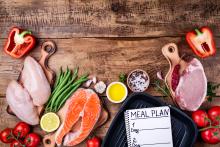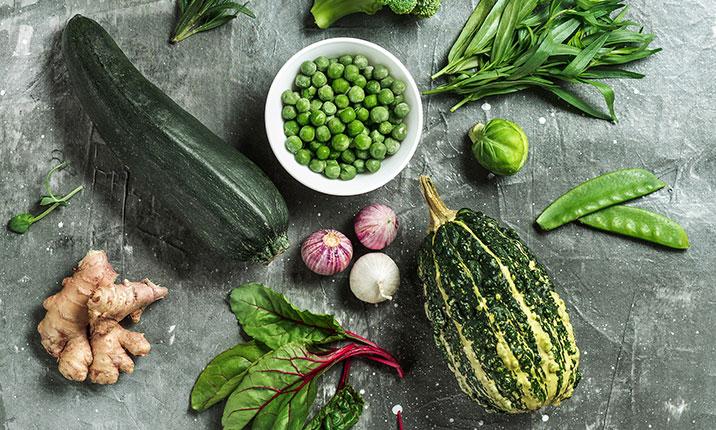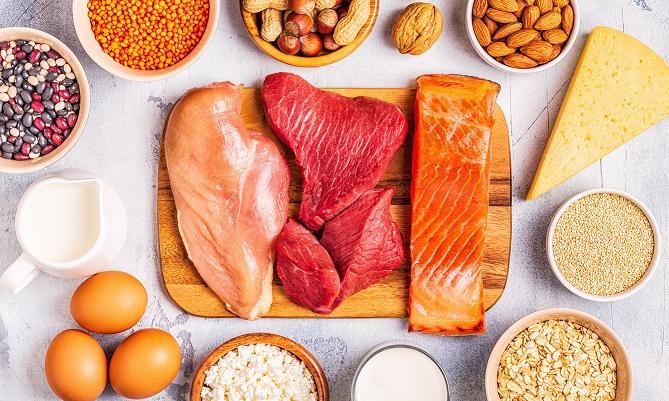Nutrition information in the media around diabetes meal planning is complicated and constantly changing. Type “diabetic diet” into a search engine and you’re going to get thousands of confusing results. Should you be vegan? Low-carb? Keto? Should you cut out fat or eat nothing but fat? Everyone seems to be suggesting something different. So what is the American Diabetes Association diabetes diet?
Quick answer: There isn’t one. At least not one exact diet that will meet the nutrition needs of everyone living with diabetes. Which, in some ways, is unfortunate. Just think how simple it would be to plan meals if there were a one-size-fits-all plan that worked for everyone living with diabetes, prediabetes, or at risk for diabetes. Boring, yes, but simple!
As we all know, it’s much harder than that. We don’t often make food choices based on nutrition science alone —we often also make food choices for social, cultural, or emotional reasons. And because each of us is different, we each need to find an eating plan best matches both our nutrition and lifestyle needs.
For people living with diabetes and trying to learn more about healthy food choices, it can be tough to tell fact from fiction and make decisions in a sea of choices. Information in the news can often be confusing, with conflicting data and advice often given at the same time.
Part of our job at the American Diabetes Association is to help sort out the science and provide guidance that is safe and works well for people at risk for and living with diabetes. And current research shows there are a many eating patterns that can work to maintain a healthy life with diabetes, not just one. In the long run, an eating plan that you can follow and sustain and that meets your own diabetes goals will be the best one for you.
What Is a Meal Plan?
A meal plan takes into account your likes, dislikes, and lifestyle. It is a guide that is aimed at helping you meet your personal weight and blood glucose goals and guides you on what, when, and how much to eat. While many people may think a meal plan is the same as a diet, we like to consider a meal plan as something you follow over time rather than a diet, which is often related to a quick fix for a short period of time.
We often make food choices for social, cultural, or emotional reasons
What Is an Eating Pattern?
An eating pattern is a term used to describe the foods or groups of foods that a person chooses to eat on a daily basis over time. There a number of eating patterns that are helpful for people living with diabetes or at risk for diabetes. Following are a few of the more popular choices that the science shows can work. You’ll notice that all of these have three things in common:
- Plenty of non-starchy vegetables such as broccoli, green beans, kale, and salad greens
- Lean protein foods including meat, chicken, fish, shellfish, eggs, cheese, nuts, seeds, and plant-based protein foods like soy and beans are included in differing proportions
- A focus on healthy fats—including vegetable oils like olive, canola, and sunflower—and limitations on solid fats like butter, lard, and margarines
There is no “one-size-fits-all” eating plan or “ADA Diet” for people with diabetes! The best eating plan for you is the one that you can sustain while still meeting your diabetes goals.
Popular Eating Patterns
Mediterranean
Mediterranean-style eating uses olive oil as the main source of fat. Fish, chicken, and small amounts of dairy products, such as cheese and yogurt, are included. Red meat is less common, though wine can usually be consumed in small amounts (one to two glasses of wine per day) with meals.
There is a lot of research on the Mediterranean style of eating and most of it shows it may help you improve blood sugar, lose weight, and reduce risk of heart disease, stroke, and some cancers. This is a well-studied eating pattern than can work for many people with diabetes.
There is no “one-size-fits-all” eating plan or “ADA Diet” for people with diabetes!
Vegetarian or Vegan
Vegetarian eating plans generally include nuts, seeds, beans, and meat substitutes with little or no animal
products, though there are many eating patterns you could label “vegetarian.” These patterns are different in terms of protein sources, from vegan eating plans that include no animal products of any kind to new patterns, such as flexitarian eating plans that include mostly plant-based foods but allow for eating meat at times.
Low Carbohydrate
A low-carbohydrate (low-carb) eating plan includes protein foods like meat, chicken, fish, shellfish, eggs, cheese, nuts and seeds, and fats (oils, butter, olives, and avocado). Most low-carb plans, such as Atkins, Keto, and Paleo, avoid highly processed carbohydrate foods and grains.
DASH
DASH is an acronym for “Dietary Approaches to Stop Hypertension” and began as a research study to help lower blood pressure in people with hypertension (high blood pressure). This eating plan limits foods high in sodium (salt), saturated fat, red meat, sweets, added sugars, and sugary drinks.
Looking for a quick place to start?
Try the Diabetes Plate Method. Most of the eating patterns above focus on what to eat. The Diabetes Plate Method helps figure out how much to eat, which can often be just as important. It takes the burden out of measuring and counting while meeting the goals of many of the eating patterns described above. This method uses a 9-inch plate, often a smaller plate than most people use. Once you have a smaller plate, the idea is to fill half your plate with non-starchy vegetables, 1/4 of your plate with protein foods, and the last 1/4 of your plate with carbohydrate foods.
Key Takeaways
Try to block out the fad-diet advice and choose a plan you are likely to follow long-term that fits both your diabetes goals and your personal needs. Think about your likes and dislikes and how a change to your eating will affect your day-to-day life with family and friends. Then see how you can match this with your personal weight-loss goals. Budget also plays a part in choosing the right healthy eating plan that will meet your needs.
Many eating patterns can help you maintain a healthy life with diabetes.
- Work with a registered dietitian or certified diabetes educator on a meal plan that is right for you.
How to find a registered dietitian:
- Ask your doctor for a referral.
- Find a registered dietitian: www.eatright.org/find-an-expert
- Find an ADA recognized diabetes self-management education program in your area: www.diabetes.org/findaprogram

























































